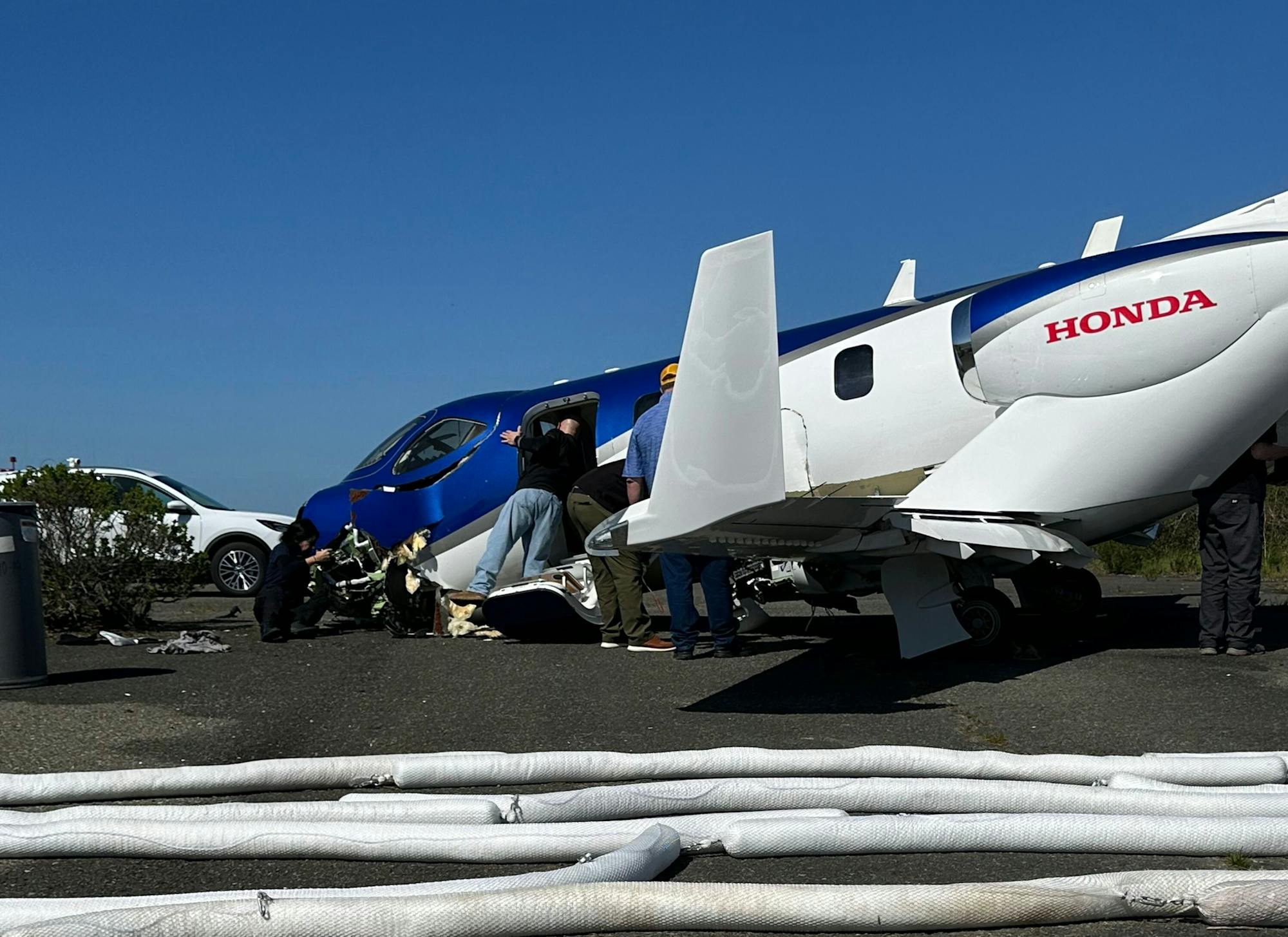NTSB RELEASES PRELIMINARY FINDINGS ON AIRCRAFT INCIDENT AT OTH

North Bend, OR – The National Transportation Safety Board (NTSB) has released preliminary findings related to the April 7, 2025 incident involving a HondaJet HA-420, which was substantially damaged during a landing at the Southwest Oregon Regional Airport (OTH) in North Bend, Oregon.
The aircraft, operating as a private corporate flight under Part 91, departed St. George, Utah, at approximately 4:09 a.m. and was on an instrument approach to Runway 5 when the incident occurred at 6:06 a.m.
There were five individuals on board: the pilot and four passengers. One passenger sustained serious injuries, while the others, including the pilot, suffered minor injuries. All occupants were able to exit the aircraft on their own.
According to the pilot, the approach was routine, and conditions were noted as wet following recent rainfall. The aircraft touched down near the expected touchdown zone at a speed slightly above the calculated reference speed (VREF), and initial braking appeared normal. The report indicated as the aircraft continued its rollout, braking effectiveness diminished according to the pilot. Despite maximum braking efforts, the airplane failed to stop before the runway's end.

In an effort to avoid a localizer antenna at the far end of the runway, the pilot steered the aircraft to the right. The aircraft left the paved surface, entered an overrun area and grassy terrain, then descended a 15-foot embankment before coming to rest in shallow saltwater adjacent to the runway.
Preliminary data shows the aircraft decelerated slightly before the last recorded tracking point near taxiway Bravo. According to the report, no skid marks or signs of anti-skid system engagement were found on the runway. Light tire tracks were observed in the overrun and grass areas, with no indication of braking.
The aircraft had recently been upgraded with software and performance enhancements specific to wet and contaminated runway operations, consistent with the HondaJet ELITE S configuration. Based on conditions at the time of landing—an estimated aircraft weight of 9,000 pounds, a wet runway, and a temperature of 11°C—the required landing distance was calculated at approximately 5910 feet.
In addition, the aircraft was not equipped with thrust reversers or spoilers, though the speed brake was deployed. Initial examination of the wheels and braking system revealed no signs of failure, excessive wear or malfunction. Investigators removed omponents from the airframe. They will be examined further as the investigation continues.
The information is part of the NTSB's preliminary report which is available online, and is subject to change as the investigation progresses.
NTSB Report_4-7-incident.pdfFor further updates, please refer to the NTSB website.
